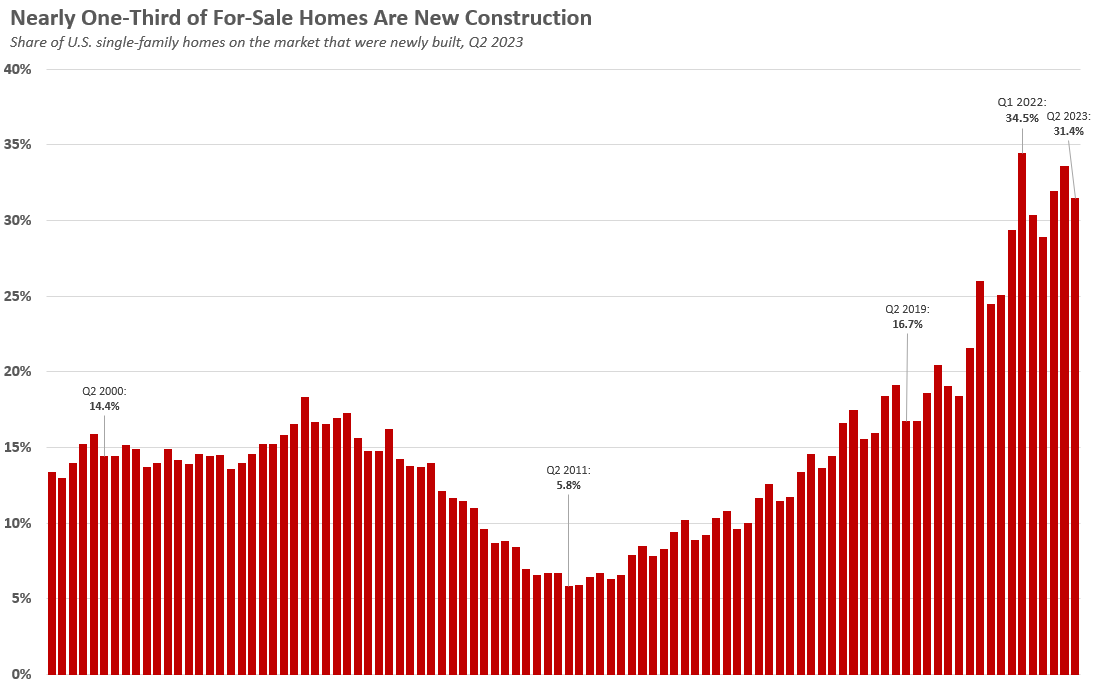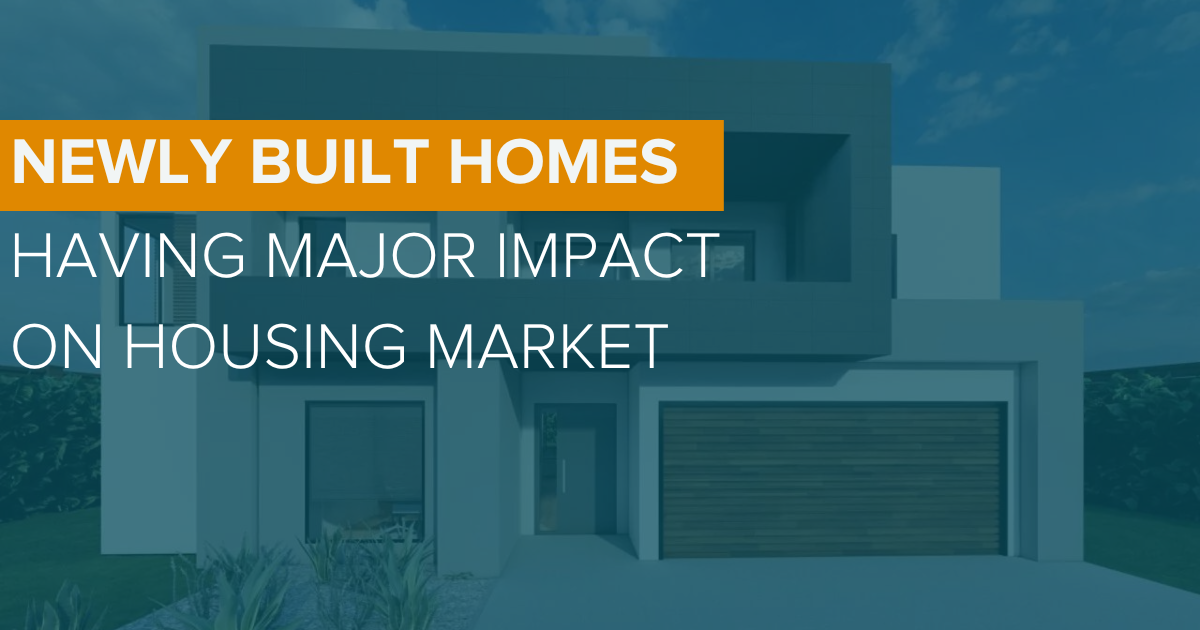In recent weeks, there has been a noticeable decline in mortgage rates. However, the housing sector faced a setback with a peak near 8% last month, negatively affecting new home sales, according to the latest findings from the Commerce Department.
The stats reveal a 5.6% drop in sales of new single-family homes in October, surpassing initial expectations. Nevertheless, there is a silver lining, as these sales still show an impressive increase of nearly 18% compared to the previous year.
Interestingly, newly constructed homes are playing a more significant role in the current housing market than they have in at least four decades.
In the world of economics, higher mortgage rates inevitably put a damper on home sales. However, in today’s housing landscape, new construction holds certain advantages for buyers, largely because it represents the bulk of available housing.
The existing homes available for purchase are at near-record lows, which is attributed to what’s called the “lock-in effect.” This effect is characterized by individuals securing a 30-year fixed mortgage rate of less than 3%, leading them to hesitate when considering a move. As a result, these homes are not readily available for purchase.
How Does That Affect The Housing Market?
In essence, while fluctuating mortgage rates pose challenges to the housing market, the scarcity of existing homes for sale is motivating prospective buyers to turn to newly constructed properties.
This shift underscores the evolving dynamics in the real estate world, where the availability of housing options significantly impacts buyer decisions in the face of changing economic conditions.
In a twist in the real estate landscape, new homes now constitute approximately one-third of all houses available for sale, surpassing double the historical average. This shift in the market dynamics emphasizes the growing significance of newly constructed properties in meeting the evolving demands of prospective homebuyers.

In the current real estate landscape, there’s a notable trend among buyers towards considering new homes as a viable option. With prices and mortgage rates on the rise, many are finding appeal in the idea of purchasing a new property.
The appeal lies in the promise of a home where maintenance and repairs are not immediate concerns, paired with the allure of enjoying the latest in design, architecture, and amenities.
This shift is driven by the realization that high prices and mortgage rates make the prospect of a new home increasingly attractive, offering a hassle-free environment where homeowners can enjoy modern comforts without the burden of constant maintenance.
This sentiment aligns with the broader trend in the market, where the advantages of new construction are not only meeting but exceeding buyer expectations.
Hard money lenders like Asset Based Lending have their fingers on the pulse of this new construction boom and are working with builders, developers, and contractors to finance these projects.
The appeal of a move-in-ready home, with contemporary features and a reduced need for immediate repairs, is steering buyers towards the new construction segment.
Looking Ahead
Daryl Fairweather, Chief Economist at Redfin, emphasizes another key factor driving this shift. Builders, inherently motivated to sell their newly constructed properties, contribute to the attractiveness of the new home market.
This motivation often translates into a more streamlined and efficient home-buying process for prospective buyers, further enhancing the appeal of opting for new construction.
Amid navigating the patterns of the real estate market, the surge in new home demand is not just a response to fluctuating mortgage rates but a strategic move by buyers seeking a harmonious blend of modern living and a simplified homebuying experience.
As we witness the transformation of the real estate landscape, the role of new homes in meeting the demands of today’s buyers continues to grow, signaling a departure from historical averages and setting the stage for a dynamic and evolving housing market.







0 Comments